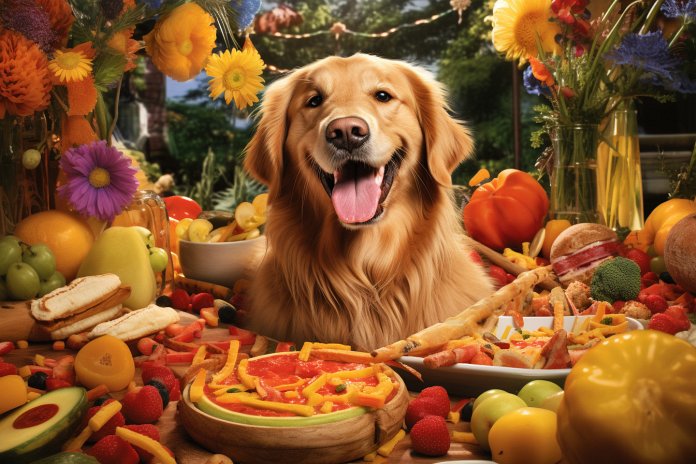
If you want to give your dog gelatinous foods, it’s important to avoid jello because it contains artificial sweeteners like xylitol that can be toxic to dogs. However, gelatin itself can be a good source of protein for dogs. In this article, we will discuss the signs that your dog has had too much gelatinous food, the dangers of xylitol poisoning, the benefits of gelatin for dogs, and how to train your dog to safely eat gelatinous foods.
Signs Your Dog has had Too Much Gelatinous Food
While gelatin on its own is a healthy treat for dogs, jello can be dangerous due to the artificial sweeteners it contains, like xylitol. If your dog eats jello, they could experience vomiting, weakness, lack of coordination, tremors, seizures, and even coma. Some signs of xylitol poisoning include cowering, panting, pacing, weakness, body freezing, twitching whiskers, lack of focus, and ears back.
Other Signs
Some signs that your dog may benefit from gelatin include poor bone and joint health, gut issues, weight loss issues, liver issues, bad sleeping habits, bad memory or brain function, and dry skin or hair.
The History of Xylitol and its Affect on Dogs
Xylitol, an artificial sweetener found in jello, is extremely toxic to dogs. Even small amounts of xylitol can cause hypoglycemia, seizures, liver failure, and death. Xylitol stimulates the release of insulin in dogs’ pancreas, leading to a rapid decrease in blood sugar levels.
The Science of Gelatin for Dogs
Gelatin is made from animal by-products and is a natural part of a dog’s diet. It can prevent arthritis, improve brain health, and promote healthy skin and fur. Adding gelatin to your dog’s diet can help them gain weight, boost their appetite, and provide various health benefits. Make sure to choose gelatin without added sugar or artificial sweeteners.
Training Your Dog to Safely Eat Gelatinous Food
To train your dog to eat gelatinous food, you can drip gelatin over their dry food or mix it with wet food. It’s important to also train your dog to eat only the foods you give them. Prevent access to food by not leaving it around the house, training your dog to “no,” “drop it,” and “leave it,” and keeping them out of the food preparation area.
Conclusion
While jello should be avoided due to its artificial sweeteners, gelatin itself can be a beneficial addition to your dog’s diet. Be aware of the signs of xylitol poisoning and ensure that gelatin is free from sugar or artificial sweeteners. With proper training, your dog can safely enjoy gelatinous foods and experience the health benefits they provide.
“Training your dog to safely eat gelatinous food is essential for their health and well-being.”

Tips & Things to Know
1️⃣ Avoid giving your dog jello: Jello contains artificial sweeteners like xylitol, which can be toxic to dogs. Stick to gelatinous foods that are free from artificial sweeteners.
2️⃣ Watch out for signs of xylitol poisoning: If your dog ingests jello or any food containing xylitol, be vigilant for symptoms such as vomiting, weakness, lack of coordination, tremors, seizures, and coma. Seek immediate veterinary attention if you suspect xylitol poisoning.
3️⃣ Use gelatin as a healthy supplement: Gelatin can be a beneficial addition to your dog’s diet, promoting bone and joint health, improving digestion, aiding weight loss, and enhancing brain function. Just make sure to choose gelatin without added sugars or artificial sweeteners and incorporate it into your dog’s meals gradually.
Frequently Asked Questions, Answered ✅
1. Why should dogs not eat jello?
– Dogs should not eat jello because it contains artificial sweeteners like xylitol, which can be toxic to them.
2. What are the signs of xylitol poisoning in dogs?
– Signs of xylitol poisoning in dogs include vomiting, weakness, lack of coordination, tremors, seizures, and in severe cases, coma.
3. What are the benefits of gelatin for dogs?
– Gelatin can help improve bone and joint health, gut issues, weight loss issues, liver issues, sleeping habits, memory and brain function, and skin and hair health in dogs.
4. Why is xylitol dangerous for dogs?
– Xylitol is dangerous for dogs because it stimulates the release of insulin in their pancreas, leading to a decrease in blood sugar levels. This can cause hypoglycemia, seizures, liver failure, and even death.
5. How can dogs be trained to safely eat gelatinous food?
– Dogs can be trained to safely eat gelatinous food by gradually introducing it into their diet, mixing it with their dry or wet food, and ensuring that there are no added sugars or artificial sweeteners. It is also important to train dogs to only eat the food given to them, avoid leaving food around the house, and teach commands like “no,” “drop it,” and “leave it.”